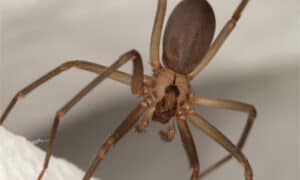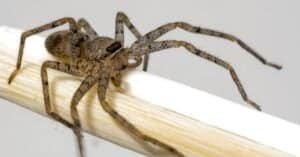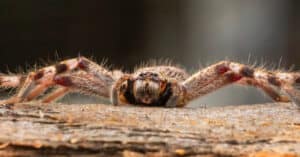Spiders are fascinating creatures with amazing abilities, such as spinning webs and climbing up many types of surfaces. Many of these skills can actually be traced back to the spider’s unique anatomy, including its legs. However, how many legs do spiders have?
If you don’t know the answer to this question, don’t worry. You’ll learn just how many legs spiders have and more interesting facts below. Ready to learn more? Keep reading!
Spider Legs: How Many Do They Have?
It can be a bit confusing when you’re first learning how many legs spiders have. This is because you might have already learned that insects have six legs, and spiders seem an awfully lot like insects.
However, it’s important to know that spiders are not insects. Spiders and insects are both in the phylum Arthropoda. This means that they don’t have a spine; they have a tough skeleton outside their segmented body, and they have jointed legs. While they are in the same phylum, however, spiders are in a separate class known as Arachnida. Other arachnids include ticks and scorpions.
So now that you know more about how spiders and insects aren’t the same, just how many legs do spiders have? All true species of spiders, as well as other arachnids, have eight legs.
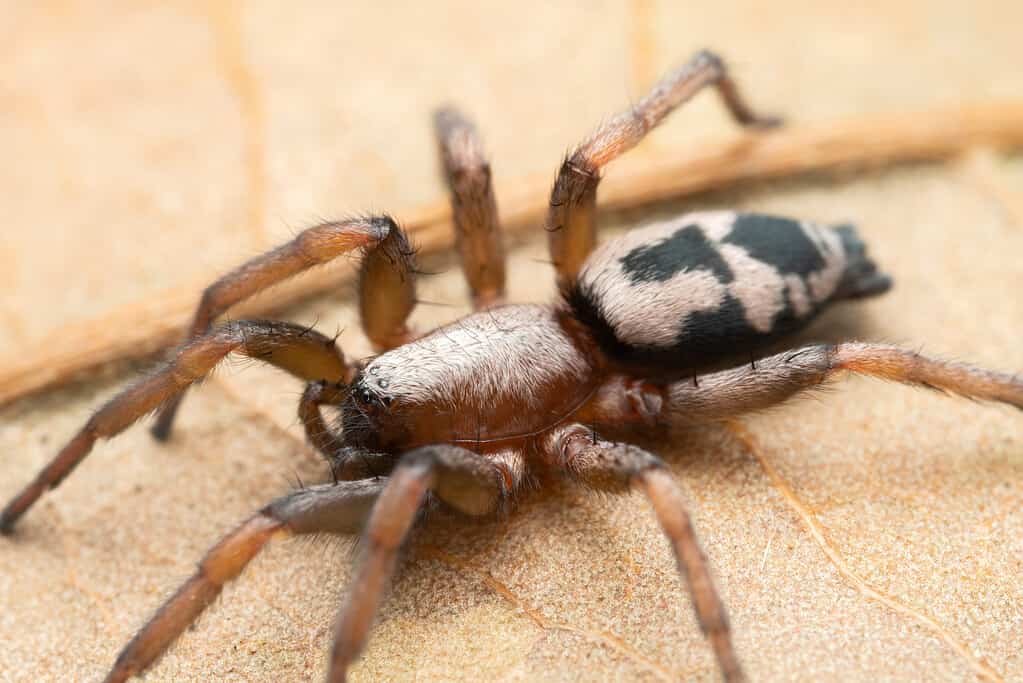
All true species of spiders, as well as other arachnids, have eight legs.
©Marshal Hedin from San Diego, USA, CC BY-SA 2.0 via Wikimedia Commons – License
3 Interesting Spider Legs Facts
The fact that there are four pairs of them isn’t the only cool part of spider legs. From climbing vertically on almost any surface to wooing mates, spider legs are an important part of their life. Because of this, there are many interesting facts to learn about these limbs, including these three interesting spider leg facts below!
1. They Can’t Extend Their Legs
In the same way that spider legs don’t quite work like insect legs, they also don’t work like human legs. This means that their muscles are different, and so is their method of walking.
You see, spiders don’t have the natural ability to extend their legs like we do. Their muscles don’t work in a way that allows them to stretch their legs. Instead, their muscles only allow them to retract their legs or pull them close to their bodies.
To extend their legs, spiders have to go through a couple of extra steps. They have a specific liquid that they can pump into their legs. This allows them to push their legs out and fully extend them. Then, they’re able to use their muscles to retract their legs.
Have you ever seen a spider that had passed away? You may notice that they’re curled up, with their legs tucked under their body. This is because once they’ve passed, they cannot move fluid around their body, which means they can no longer extend their legs. As a result, their legs return to their natural state, which is retracted.
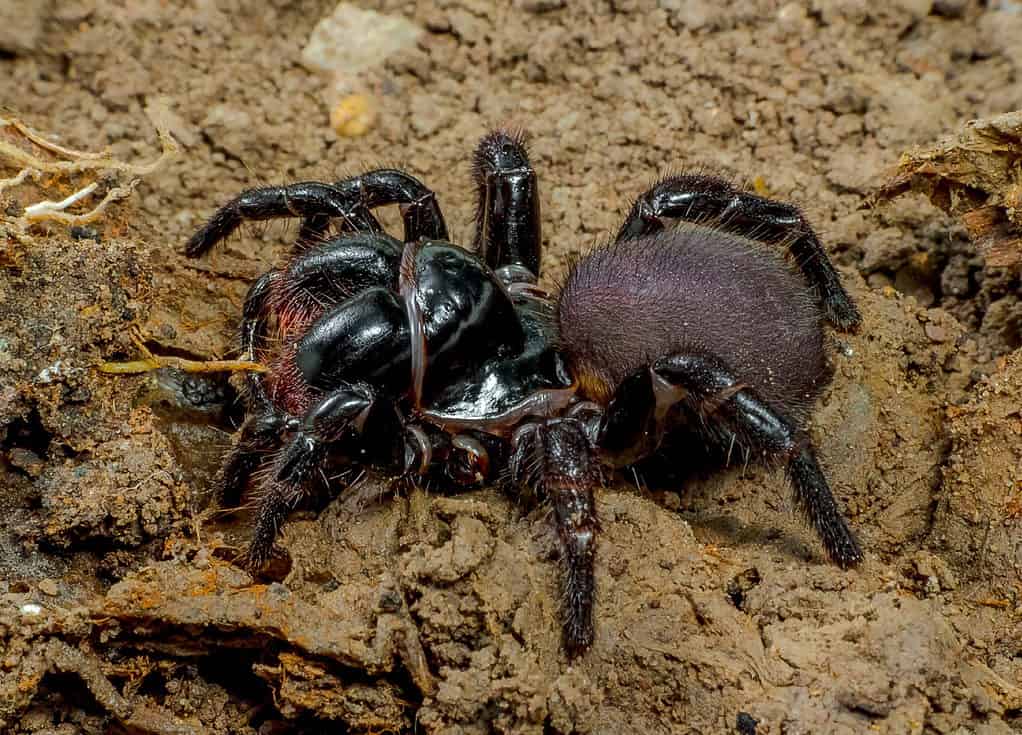
Spiders can’t extend their legs the way we do. They can only retract their legs or pull them in close to their bodies.
©Robertwhyteus, CC BY 4.0 <https://creativecommons.org/licenses/by/4.0>, via Wikimedia Commons – License
2. They Use Their Legs to Perform Elaborate Mating Dances
With all that extending and retracting, spiders are able to do some pretty neat things with their legs. This includes creating and performing elaborate dances to garner the attention, and favor, of a potential mate.
Not all species of spiders will perform mating dances. However, it’s not uncommon to see in the spider world. Different species of spiders will perform different movements and dances, with some resembling the dances of humans as well. This includes the peacock spiders (Maratus volans), whose dance resembles the humans’ “YMCA” dance.
If a spider’s dance doesn’t impress a female, however, there’s a greater price to pay than simply not gaining a mate. For some species, including the peacock spider, failing to secure a female through dance can cause her to try to attack, kill, and eat the unsuccessful male. Talk about a tough crowd!
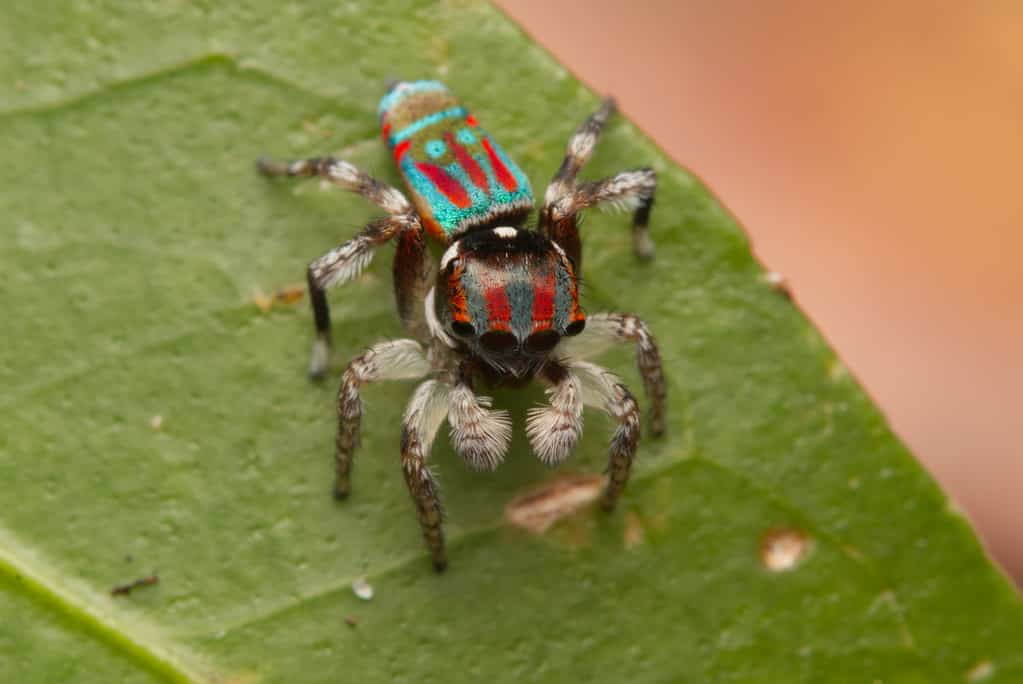
Some species, such as peacock spiders, use their legs to perform elaborate dances to attract a potential mate.
©2,048 × 1,367 pixels, file size: 1.88 MB, MIME type: image/jpeg – License
3. Spiders Have Sticky “Hair” on Their Feet
Above, you learned that spiders use their legs to climb on many surfaces, including their webs and vertical surfaces. However, how do their eight legs allow them to do it? As it turns out, they have the unique ability to utilize dry adhesion.
When you think of adhesion, you might think of glue or similar substances. However, spiders don’t have sticky liquid on their feet, allowing them to stick to things. Instead, they have small sticky “hairs” known as spatulae. The spatulae on a spider’s legs grow in many different directions. This allows them to easily connect with and stick to a variety of surfaces and move in different directions on that surface.
Spider legs and feet are actually quite similar to a gecko’s when it comes to sticking to different surfaces.
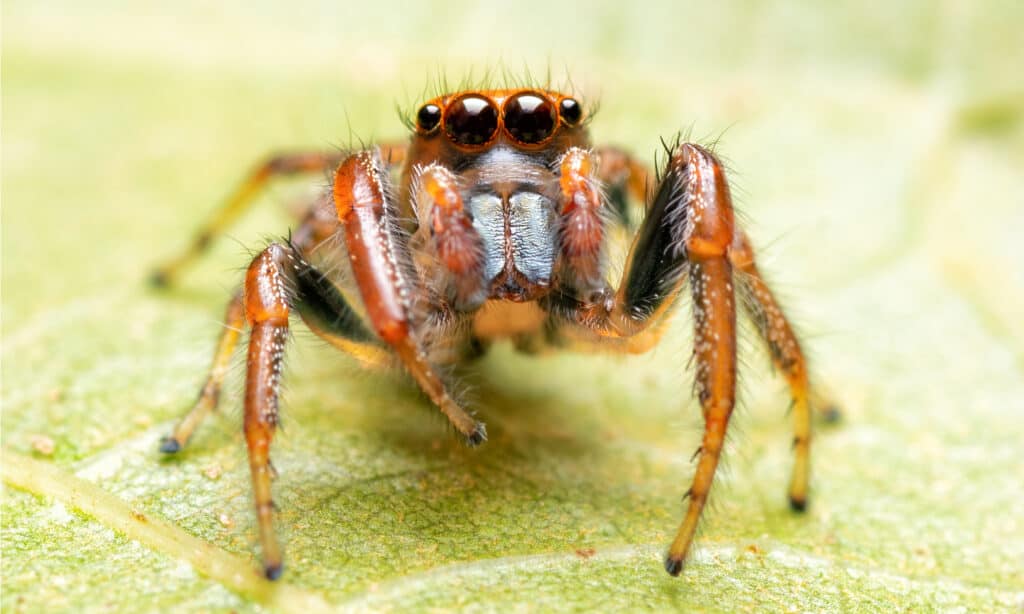
Spiders have tiny sticky “hairs” on their legs, known as spatulae, that helps them stick to a variety of surfaces.
©Sari ONeal/Shutterstock.com
The photo featured at the top of this post is © Kaldari / CC0 via Wikimedia Commons – License / Original
Thank you for reading! Have some feedback for us? Contact the AZ Animals editorial team.



